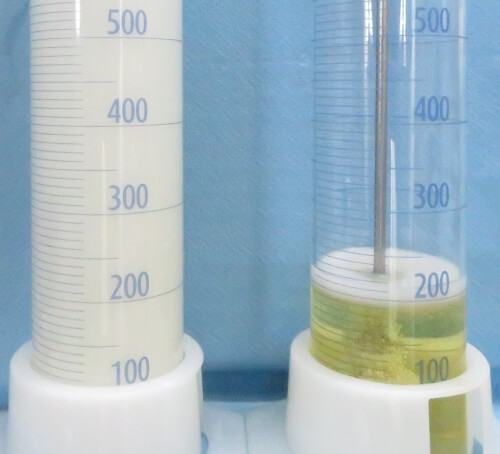


ADDINOL turbine oils – specially for turbo units
ADDINOL turbine oils were developed specially for use in water, gas and steam turbines (with and without gears) as well for turbo compressors and transmission compressors (Turbine Oil MT series). They stand out through their carefully selected, high-quality base oils and perfectly matched, zinc-free additives. In particular, when using turbines in power stations, reliable operation is of decisive importance. Faults, failures and unplanned downtimes endanger the supply security and can cause enormous costs. Use ADDINOL turbine oils to guarantee long service lives of systems and lubricants as well as to minimise the time and costs for maintenance and oil changes.
Your benefits at a glance:
- Developed specially in cooperation with leading OEMs
- Optimum use with the highest thermal loads and extreme conditions
- Excellent ageing stability due to high-quality basic components
- Effective prevention of deposits on the basis of the highest thermal stability
- Reliable protection of all components against wear
- Outstanding air and water separation capacity
- Maximum energy efficiency through safe and reliable lubrication
- Highest operational safety and fault-free operation without drops in performance
- Effective prevention of foam formation, rust and corrosion
- Longest oil change intervals
- Excellent, personal service thanks to our Application Technology
Information about turbine oils
Turbine oil composition
Turbines are turbomachines that use a working medium to transfer mechanical energy to the machine to be driven. There are many lubrication points in a turbine that have hydrodynamic conditions. The bearings of the turbines are hydrostatic and prevent mixed friction. This means that turbine oils can be used for a long time. This is done at high temperature, speed and, if necessary, humidity. The turbine oils must lubricate various components and function as hydraulic oil, bearing lubricating oil, transmission oil and cooling fluid.
Turbine oils operate in a high-speed range and the oils are exposed to high temperatures. This requires high thermal and oxidative stability.
Especially a good air release capacity of the oils is desirable in order to prevent foam formation in the oil. Too much air in the turbine oil drastically reduces the lubricating properties. Foaming can lead to delayed reactions in hydraulics and cavitation in pumps and bearings.
Turbine oils are generally based on base oils with good demulsifying properties (water separation). When used in steam or water turbines, the oils come into contact with water and must be very robust in this respect. If the water remains permanently in the lubrication circuit, there is a risk of bearing damage. In this respect, resistance to corrosion and rust is also decisive, as water attacks the metals. A critical limit for the water content in the oil is 1000 ppm or 0.1%. The value may vary depending on the system.
Also important for a good turbine oil is its filterability in order to remain operational for a long time and to prevent oil ageing. Purity, viscosity and wear protection must be given to a high degree in order to lubricate a turbine reliably. The filling quantities of the oil can be up to several thousand litres per application area. Therefore, a long-term use without oil change is desirable. The oil is used up to 20 years without changing.
Additives in turbine oil
In general, turbine oils contain a relatively small amount of additives. The base oil quality mainly determines the performance of a turbine oil. However, the addition of additives cannot be completely dispensed with. Important additives in turbine oils are:
- Antioxidant additives
- Anti-corrosion additives
- Wear protection additives (for turbines with gears)
- Demulsifiers (increase of water separation)
- Foam inhibitors (prevention of foam formation)

Requirements for turbine oils
The minimum requirements for turbine oils in Germany are defined by DIN in standards 51515-1 & 51515-2. In addition, the turbine manufacturers specify requirements for the lubricants, e.g. Siemens TLV 901304 and TLV 9013405.
| DIN 51515-1 Edition:2010-02 | Lubricants and control fluids for turbines - Minimum requirements - Part 1: Turbine oils TD for normal thermal loads |
| DIN 51515-2 Edition:2010-02 | Lubricants and control fluids for turbines - Minimum requirements - Part 2: Turbine oils TG for elevated thermal loads |
Basic requirements for a lubricant according to DIN 51515:
- Excellent oxidation stability
- Good corrosion protection properties
- Excellent water separation capacity
- Low foaming tendency
- EP properties
- High purity
- Viscosity according to ISO VG 32 or ISO VG 46 (suitable for plain bearings and gears)

Tasks of turbine oil
Turbine oils are mainly used in plain bearings and gears of steam, gas and water turbines. They are also used in turbo compressors.
Specific application areas of turbine oils are:
- Gas and steam turbine power plants
- Gas turbines in block-type thermal power stations
- Gas and steam powered propulsion engines, e.g. on ships
- Hydropower plants with turbines
- Drive of pumps, compressors and blowers

Turbine oil selection
The selection of the suitable turbine oil always depends on the respective operating conditions and ratios. The type of turbine and its design (combined or separate lubrication and control fluid system) are also decisive. The manufacturer's instructions can also specify which lubricant is suitable for a turbine and which is not. For a better overview, the most important turbine types and their special features are presented below.
Steam turbines
In a steam turbine, a shaft with blades is used in several plain bearings together with a cylindrical housing. Around the housing, nozzles generate steam flows under high pressure which hit the blades. Part of the pressure energy is converted into velocity energy. The accelerated and directed steam jet flows out of the nozzles at high speed, collides with the rotor blades and flows through the rotor blade channels. This process causes the impeller to rotate. The kinetic energy is therefore converted into mechanical work.
Condensing turbines return steam in the form of water to the boiler to generate new steam. They are used to drive generators as well as compressors and pumps. Turbines with scattered extraction release the steam to the environment or a heat exchanger. The steam is used as heating steam, production steam or for feed water preheating. Applications include combined heat and power plants, waste incineration plants and chemical production plants.
Gas turbines
In a gas turbine, the axial compressor, combustion chamber and turbine combine to generate energy. The turbine drives the compressor and the generator. Compressed air is supplied to a fuel gas and burnt. The heated exhaust gas hits the blades and drives the turbine. The principle is used in power plants, on ships and in aircraft.
Some power plants also rely on a combination of gas and steam turbines (CCGT). The exhaust gas from gas turbines is used to operate the boiler for steam generation. This then sets the steam turbine in motion. The thermal efficiency of this combination can increase to 60%. Individual turbines have a thermal efficiency of 30 to 38%.
Lubrication of steam and gas turbines
In steam and gas turbines, the lubrication points are supplied by a central lubricant supply or a separate lubricating and control oil system.
The central lubricating oil supply lubricates all lubrication points and control elements with the same lubricating oil. Mineral oils are mainly used for this purpose. With separate lubricating and control oil systems, flame-retardant phosphoric acid esters are often used in the control circuit of power plants. This increases the operational safety of the system.
Turbine oil performs the following functions in steam and gas turbines:
- Lubrication of pressure and support bearings of turbine, generator, exciter machine in pressure circulating system
- Lubricating the gearbox of geared turbines
- During start-up or shut-down, the oil is used to lift the turbine rotor to prevent high mixed friction and wear.
- Lubrication of compressor support bearings in gas turbines
Water turbines
Water turbines are used to generate electricity in hydroelectric power plants. The mode of operation is similar to the gas or steam turbine, except that water drives the blades. Neither a compressor nor a boiler are required. Compared to gas or steam turbines, they are easier to operate, but much larger. Water turbines also require a lubrication system that operates at lower temperatures. A classic field of application is the drive of electric generators in hydroelectric power plants at reservoirs or rivers.
Lubrication of water turbines
The following lubrication points are supplied in water turbines:
- Axial or track bearings as well as radial or guide bearings
- Control and power transmission elements are supplied with hydraulic fluid via a hydraulic system.
- Wing head adjustment device for Kaplan turbines
- Gearbox
- Auxiliary systems such as sluice and weir drives
If the turbines are not in continuous operation, the oil temperature must not fall below -5°C for control devices and gear units and 10°C for plain bearings and roller bearings. As the auxiliary systems can be subject to adverse outside temperatures of up to -25 °C, the oil temperature should be kept at a constant level by means of heating elements. Oil becomes thicker when cold and can possibly no longer produce a stable lubricating film at low temperatures.

Monitoring the condition of the turbine oil
To ensure that the oil used remains functional for as long as possible, some characteristic values of the turbine oil should be checked continuously. Measures such as conscientious care, monitoring and maintenance of turbine oil contribute to achieving a long service life.
The turbine oil can be damaged during operation by the following causes:
- Oxidation: chemical reaction of the atmospheric oxygen with the oil.
- Thermal degradation: chemical change of the base oil including additives due to high temperatures
- Impurities: Entry of water, dust, detergents and other foreign matter into the oil
- Consumption of additives: Additives to prevent water ingress, foam formation and oxidation are consumed, rinsed out or filtered out of the oil during use.
The oil is monitored regularly in order to identify these critical factors promptly. In addition to testing the physical and chemical properties of the oil, contamination measurements are carried out and the performance of the oil is determined.
These oil properties/values are monitored:
- Oxidation stability
- Viscosity
- Total acid number
- Water content
- Metal content
- Particle counting
- MPC (Determination of the tendency to form deposits, Varnish potential)
- Corrosion protection
- Water separating capacity
- Foaming tendency
- Air release capacity
The oil samples should always be taken while the system is operating at normal temperature or shortly after the system has been switched off. The sampling container must be clean and not contaminated by other substances. The sample is then sent to a laboratory.

Are you interested in our turbine oils? Find a sales partner near you.